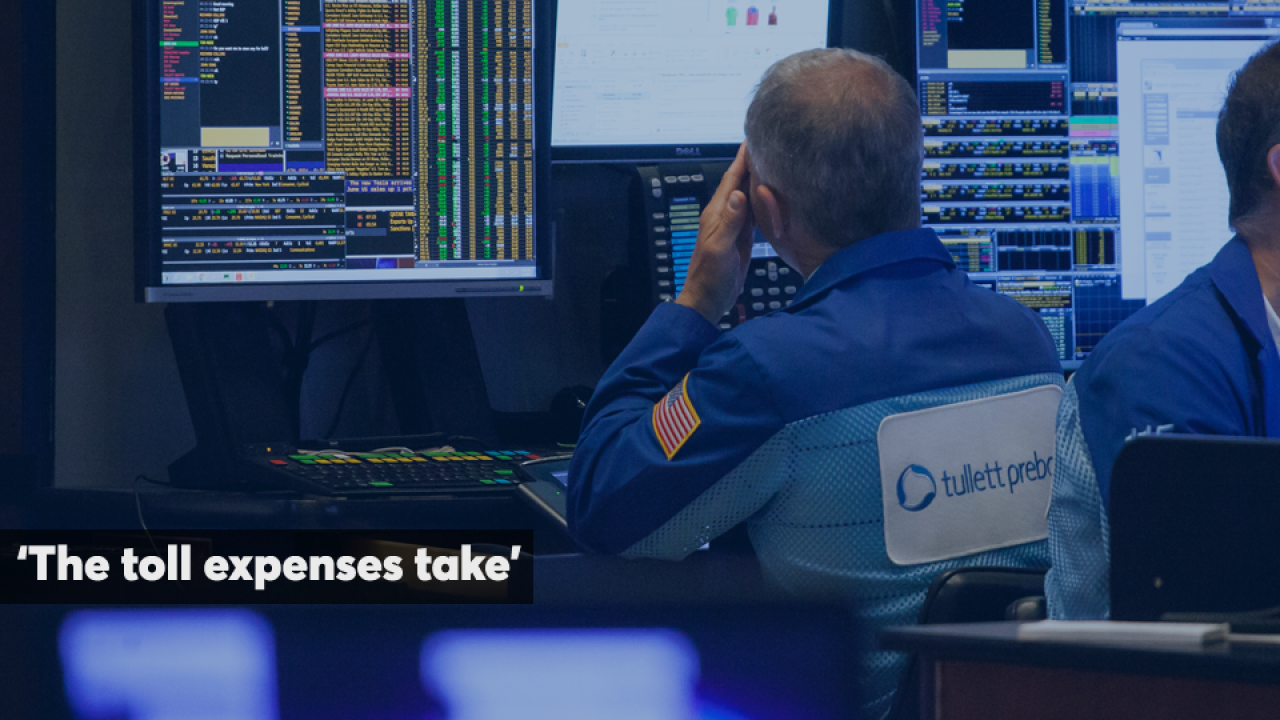In the fastest stock-market correction in history, it helps to be among the fastest hedge funds around.
Short-term trend followers are poised for their best quarter since 2016, riding wild swings across equities, bonds and commodities as volatility notches records and liquidity collapses.
The quants — a subset of commodity trading advisors — can model multi-asset trends at a breakneck pace and use futures contracts to trade them over the course of a few days. In need-for-speed markets lashed by the spreading coronavirus, this breed of rules-based trading is paying off.
Bonds rally one day, slump the next. Oil notches record one-day gains in a week of epic losses. Stocks jump, slide anew, then look to rebound on the heels of fresh Federal Reserve stimulus.
All that whiplash is buoying short-term CTAs after years of underperformance versus quants who follow longer-term trends.
Grant Jaffarian, a portfolio manager at Crabel Capital Management with $4.5 billion overall, is enjoying the market ride of late.
His Advanced Trend fund, up around 18% this year, is built for times like these. By switching between a variety of different historical periods — known as lookback periods — to mine trading signals, it turned bearish faster than CTA peers with a medium-term view.
“When markets are quiet and volatility is low and QE is present, you’re going to see, and we have seen, a perpetual return to risk-on with quiet volatility and very tight market-making spreads,” Jaffarian said. “When you have periods that are not like that, you have a vacating of liquidity and you have re-adjustments of portfolios that need to happen.”
-
Passive ETFs are often among the first to feel the pain of investors fleeing risky emerging markets for safer assets.
March 5 -
COVID-19 is bringing business to PayPal, Blend, Symphony and others as homebound consumers and commercial clients seek more electronic services. But demand could cool if the economy slows further.
March 18 -
"Asset managers need to be faster and smarter to make the right bets in a fast-changing external environment.”
March 6
With investment banks less willing to ensure two-way trading because of tighter post-crisis regulations, liquidity has dwindled rapidly in recent weeks, amplifying price moves from U.S. Treasurys to stock futures. In normal circumstances, high-frequency traders and hedge funds might step in to help banks make markets, but when volatility strikes, they tend to disappear.
“Hedge funds are not obliged to make markets,” said Nigol Koulajian, founder of Quest Partners in New York, which manages $1.7 billion. “What’s the point of having high liquidity when you don’t need it? But the moment you need to get out, liquidity dries up.”
Koulajian’s flagship product was up about 19% this year, he said on Wednesday, thanks to his model turning short on stocks early enough to reap gains from the sell-off.
But even fast-money quants like Koulajian say the current climate is making it harder to execute large trades. Speaking last week, the investor said he was unable to add to his positions because volatility was high and liquidity was low.
When that happens, trades can suffer from “slippage” — a situation where a security trading at $40 on-screen may cost $41 by the time a buy order is entered because not enough people are willing to take the other side of the transaction.
Jaffarian says Crabel has benefited from a low-latency infrastructure — the kind used by high-frequency traders who transact in milliseconds with algorithms so that their orders don’t move the markets.
“What happens when you go from moving a market one basis point and the same order size moves the market by a percent the next day?” he said. “You need to be thoughtful in terms of how you build your algos, so you’re not just plowing the market with volumes that it can’t handle.”
To the likes of Jaffarian and Koulajian, the volatility is part of why being short-term works. But it’s a debate that’s long divided the world of CTAs, where many prefer using longer lookback periods to divine an entrenched trend.
Although roughly 40% of the actively managed industry beat their indexes, the worst-performers eked out an average gain of just 1.07%.
This cohort argue it saves on trading costs and rides the most sustainable trends. SocGen’s overall CTA index has gained 15% in the past decade, compared with just 0.3% for its gauge of short-term traders.
In this cycle, medium- to long-term CTAs have suffered from being long equities initially, but benefited from their long-bond and short-energy positions.
All told as the 2020 mayhem shows, the fastest of the fast money can pounce on pronounced volatility and macroeconomic uncertainty. A strategy that just rides intraday momentum in S&P 500 futures, for instance, hit an all-time high last week, according to a Deutsche Bank AG index.
“It’s far more difficult to see trends last,” said Caio Natividade, global head of quantitative research at Deutsche Bank. “We have seen sudden shocks that have been acute such that by the time a traditional trend-following mechanism picks it up and gets positioned to fully harness that, you will already have gone halfway through the drawdown.”







